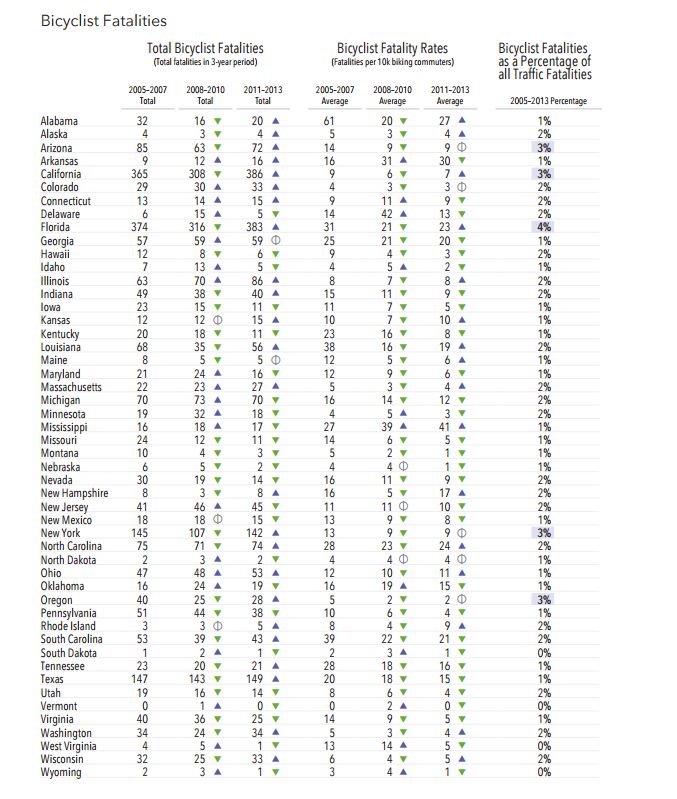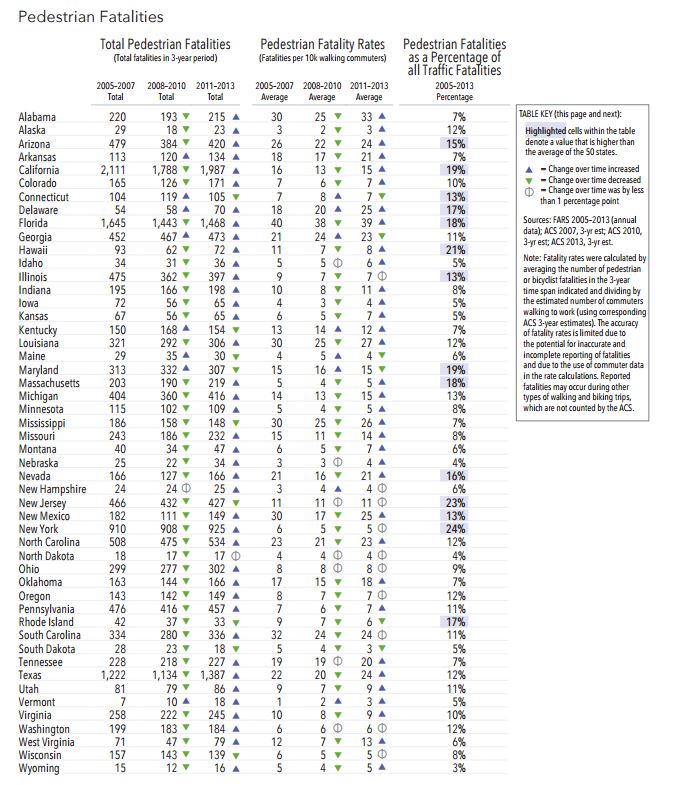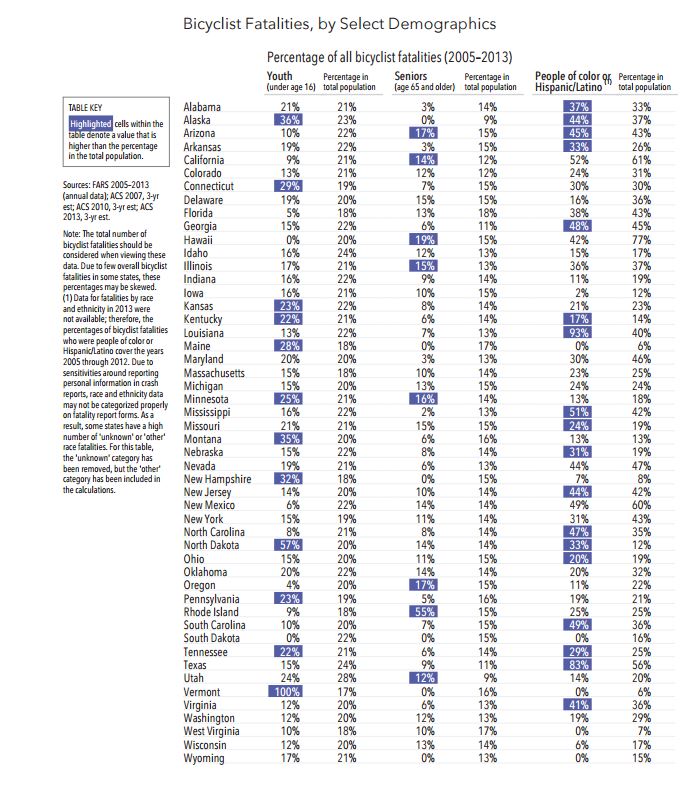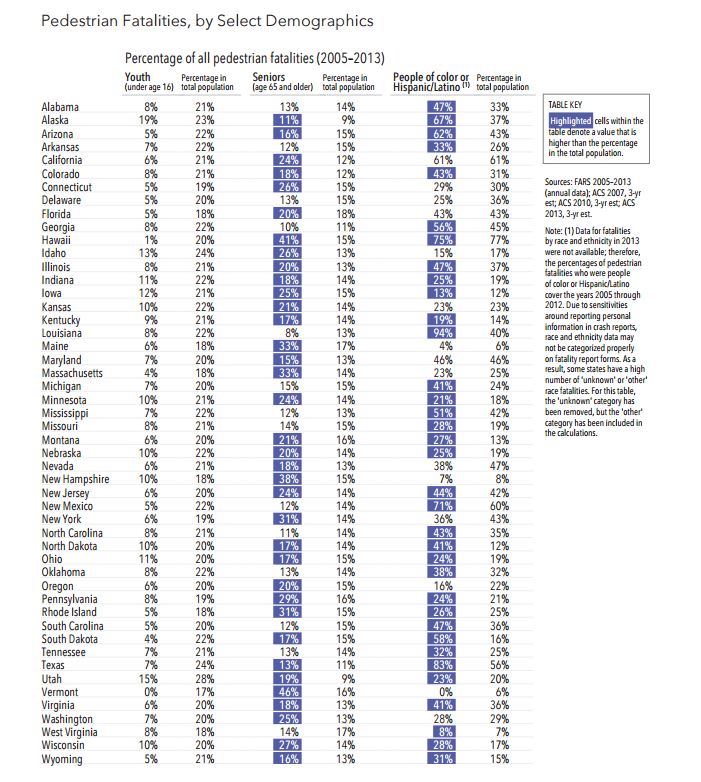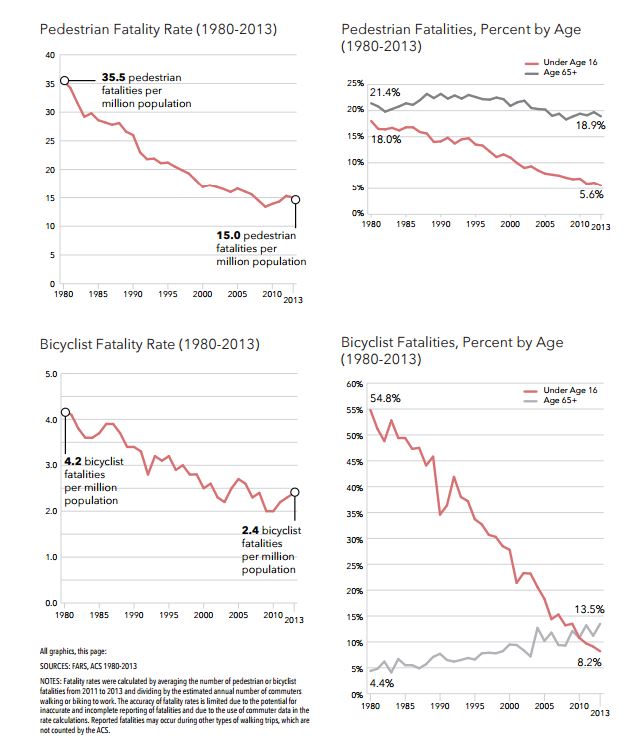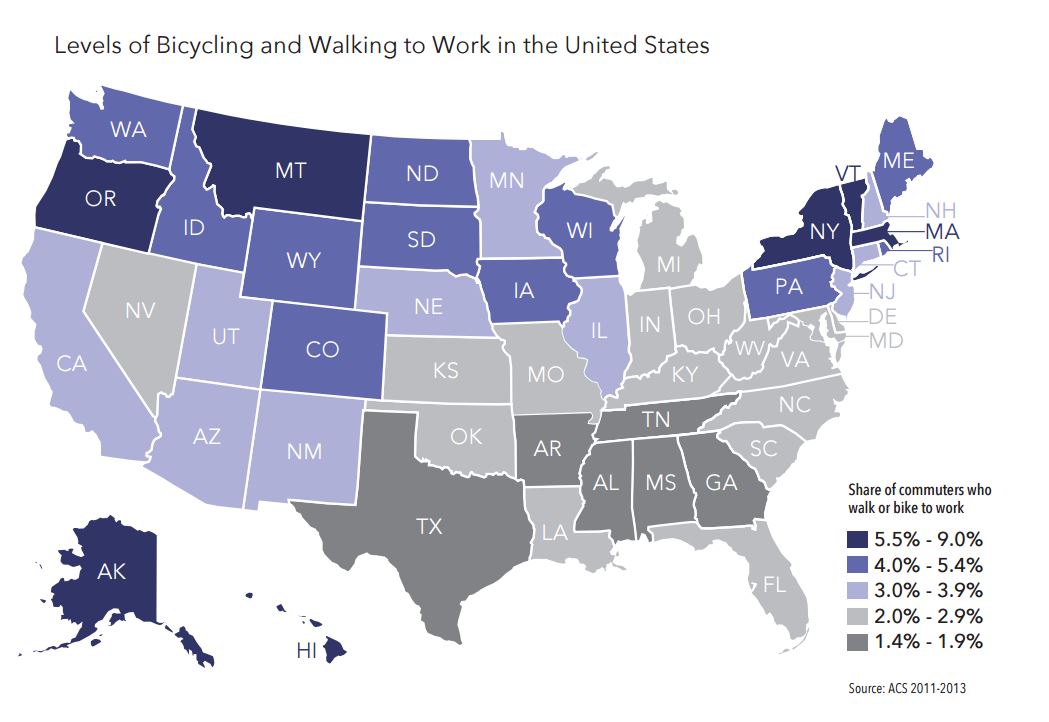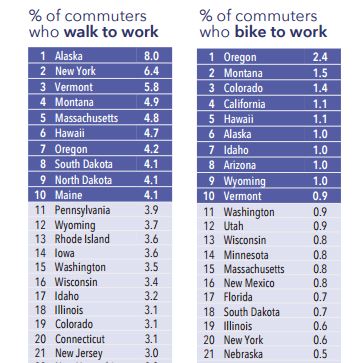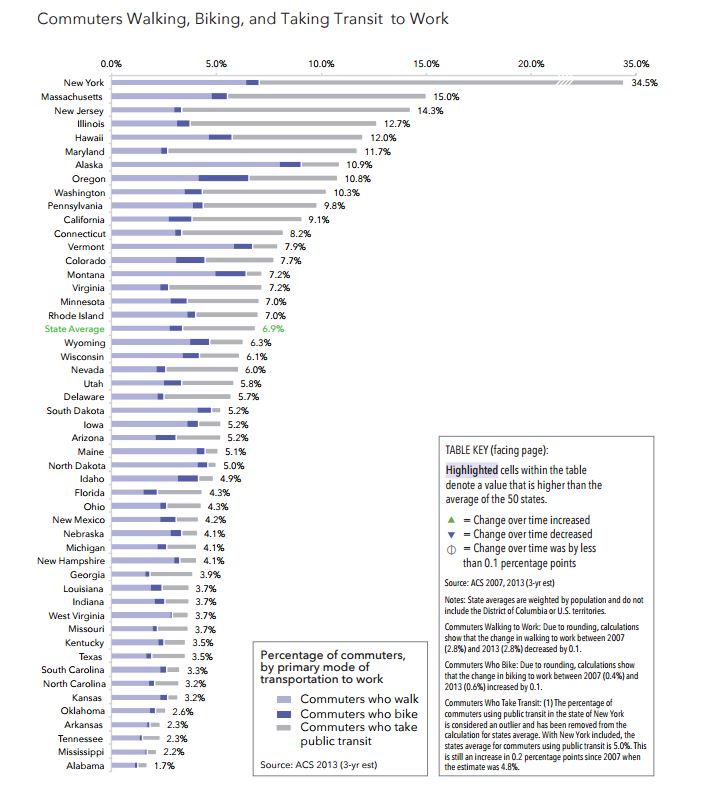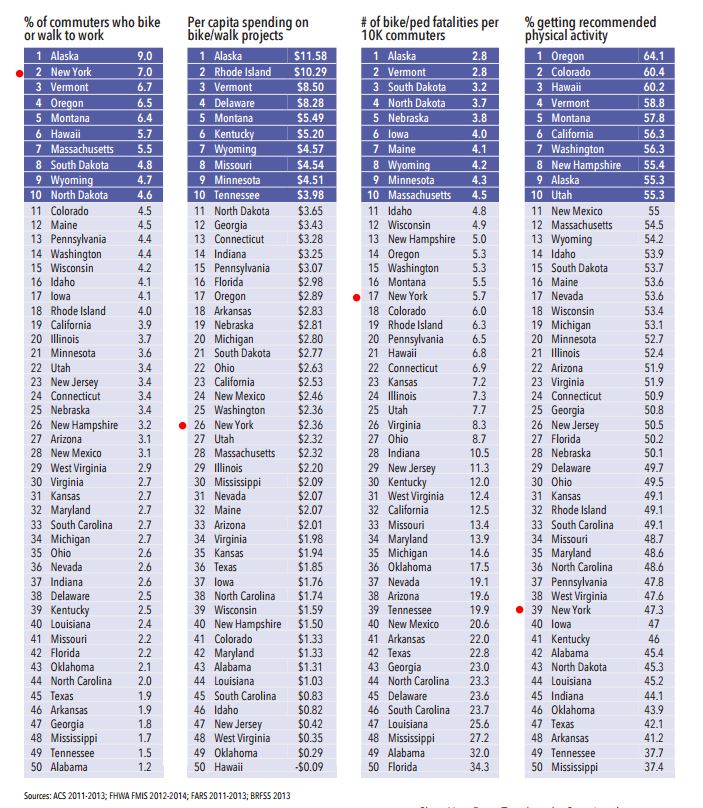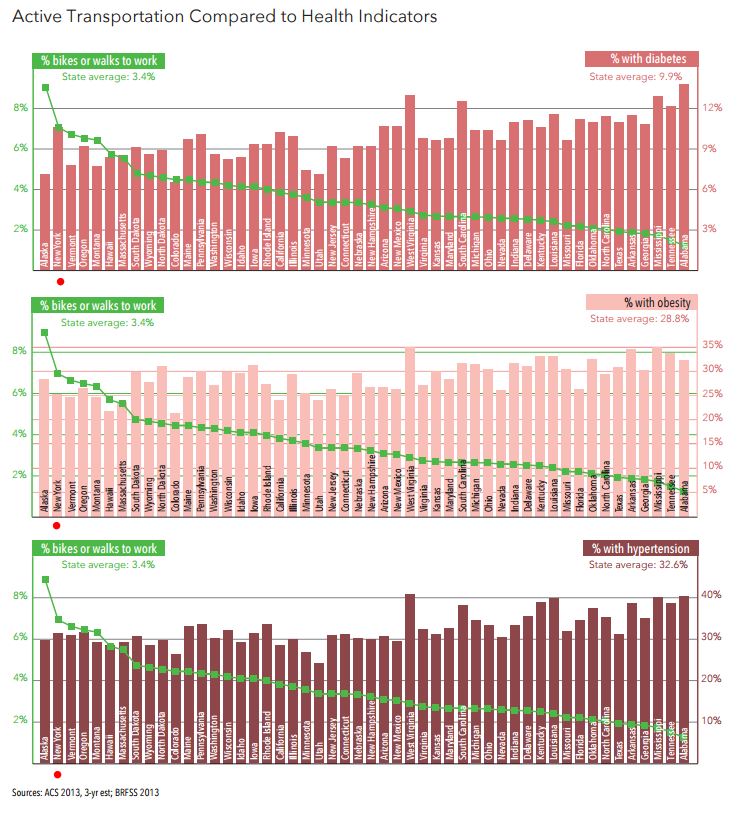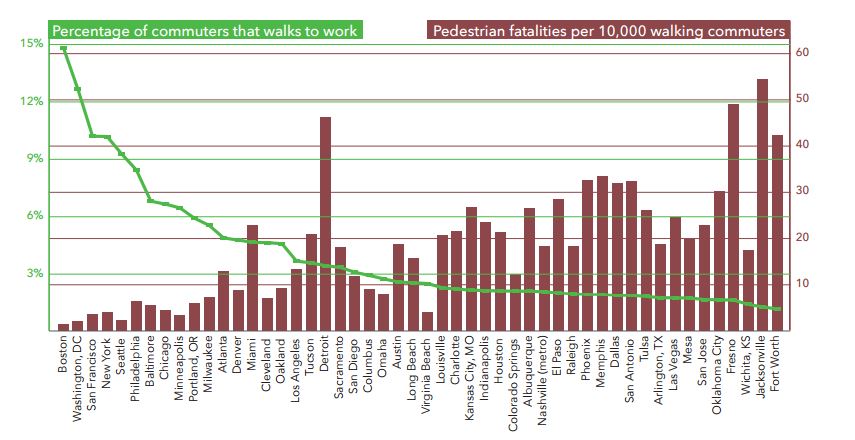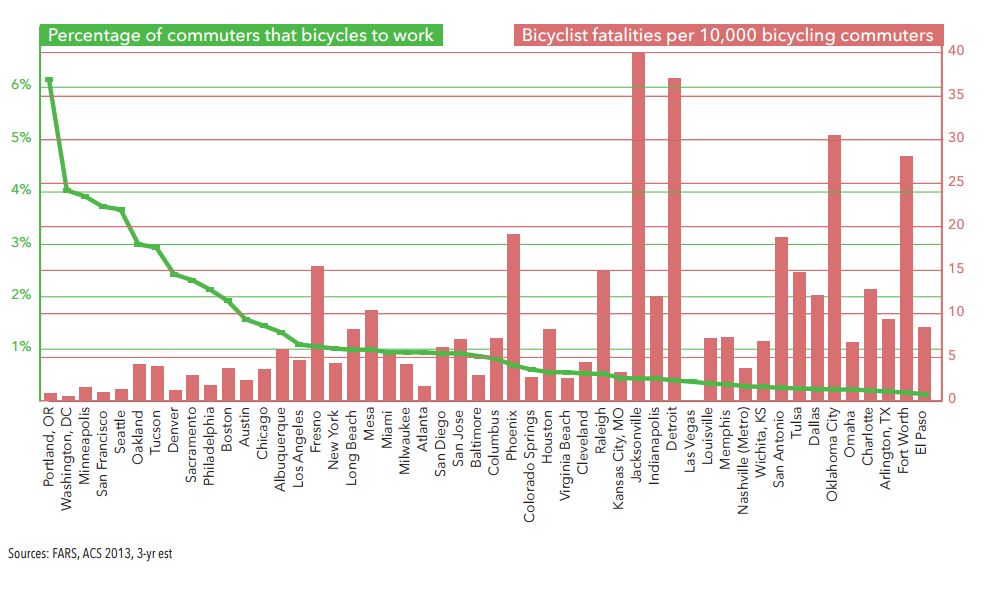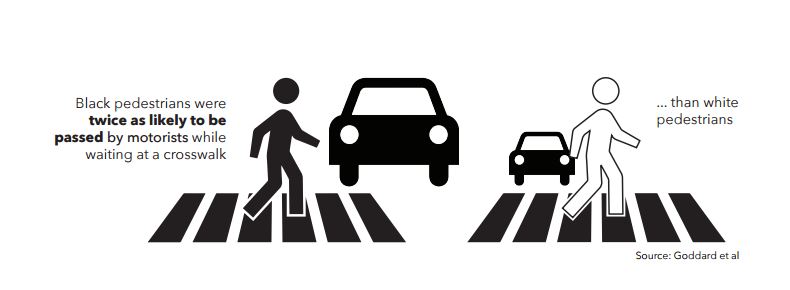Too many bicyclists and pedestrians are dying in traffic accidents in New York despite new laws and policies
In New York State, 142 bicyclists and 925 pedestrians died in accidents during the 3-year period of 2011, 2012 and 2013 according to the recently released Alliance for Biking and Walking 2016 Benchmarking Report. The number of bicyclists and pedestrian fatalities increased compared to the 3-year period of 2008, 2009 and 2010. This doesn’t mean however that the streets and the roads in New York are getting more dangerous for pedestrians and bicyclists. A study of the bicyclist fatality rates between 2005 and 2013 shows that the bicyclist fatality rate over the 3-year period of 2005, 2006, 2007 was 13 fatalities per 10K biking commuters compared to 9 on average for the 3-year periods of 2008-2010 and 2011-2013. For New York pedestrians the sames rates were respectively 6, 5 and 5.
Even though these rates indicate that the roads of New York have gotten slightly safer, New York State’s bicyclist fatalities as a percentage of all traffic fatalities is 3% which is the second highest rate of all states in the US behind Florida with 4%. Looking at the pedestrian fatality rate as a percentage of all traffic fatalities, New York has the highest rate of all states in the US with 24% (click on graph below to see them in a larger size)
Looking at selected demographics, data shows that in New York State from 2005 to 2013 an average 31% of bicyclists killed in bicycle accidents were Hispanic, 11% were seniors (over age 65) and 15% were youth (under age 16).
While seniors represented 14% of the New York population on average between 2005 and 2013, they accounted for 31% of the fatal pedestrian accidents in New York State. 6% of the victims were under 16 years old and 36% of them were Hispanic.
Globally, the streets are much safer in the US now than 20 years ago. The US pedestrian fatality rate went down dramatically from 35.5 yearly pedestrian fatalities per million population to 15. Looking at specific demographics the rate of youth killed in traffic accidents went down from 18% to 5.6% of all pedestrian fatalities while the senior rate slightly decreased from 21.4% to 18.9%,
The bicyclist fatality rate also decreased from 4.2 yearly bicyclist fatalities per million population in 1980 compared to 2.4 in 2013. While the percentage of youth (under age 16) killed in bicycle accidents decreased from 54.8% to 8.2%, the percentage of seniors (over age 65) dying in bicycle accidents almost doubled from 4.4% in 1980 to 8.2% in 2013.
With 6.4% of commuters walking and o.6% of them riding a bike to go to work New York has one of the highest levels of bicycling and walking to work with Vermont, Montana, Massachusetts, Oregon, Alaska and Hawaii.
While adding mass transit, New Yorkers are definitely the greeners with 34.5% of them walking, bicycling or using mass transit to get to their workplace.
New Yorkers have the second highest rate of people walking or using their bikes to comute just behind Alaska. However this rate is very high not because of the high number of ciclysts but because of the high number of pedestrians. More needs to be done to encourage peole to use their bike to go to work. New York didn’t invest much to encourage people to walk or bike: it comes number 26 in terms of investment in bike or walk projects per capita. It also ranks 17 among all states for safety with a 5.7 bike/pedestrian fatalities per 10K commuters rate. Even though many New Yorkers are walking and biking, they are not very healthy. Only 47.3% of them get the recommended amount of physical activity which puts the State of New York at the 39th position in the ranking.
At the national level, in 2013, 4,735 people died as pedestrians on U.S. roads; 743 people died as bicyclists. Communities of color, seniors, children, low-income populations, and rural communities are disproportionately affected.
Looking at Administrative priorities, New York State has goals:
- to increase walking,
- to increase biking,
- to decrease pedestrian injuries and fatalities
- to decrease bicyclists injuries and fatalities
The administration has no plan in the area of increasing physical activity where New York State lags the most behind other states
More specifically New York state has a master plan to increase bicycling and walking. The State also has a walking trail plan but no mountain bike trails plan. The NY highway safety plans includes and emphasizes bicyclists and pedestrians Safety. NY State also has a carbon emission plan that encourages people to walk and bike. Again on the negative side New York doesn’t do any health impact assessment and doesn’t have any projects related to increase the level of physical activity among New Yorkers.
New York State doesn’t provide any incentive program to encourage people to use their bike or walk to go to work however other policies such as street design are in place to support improvements for pedestrians and bicyclists.
When it comes to legislation supporting pedestrians and bicyclists, New York is lagging behind. Among 6 types of bike/pedestrian friendly legislation suggested in the report, New York only passed two. In New York bicycles are not considered vehicles but bicyclists can ride Two-Abreast. New York State doesn’t require a three-foot passing on the right, doesn’t increase penalties for violating existing laws that impact vulnerable road users and doesn’t have any trip reduction law encouraging sharing trips or to use an alternate mode of transportation. New York has a right of way law. 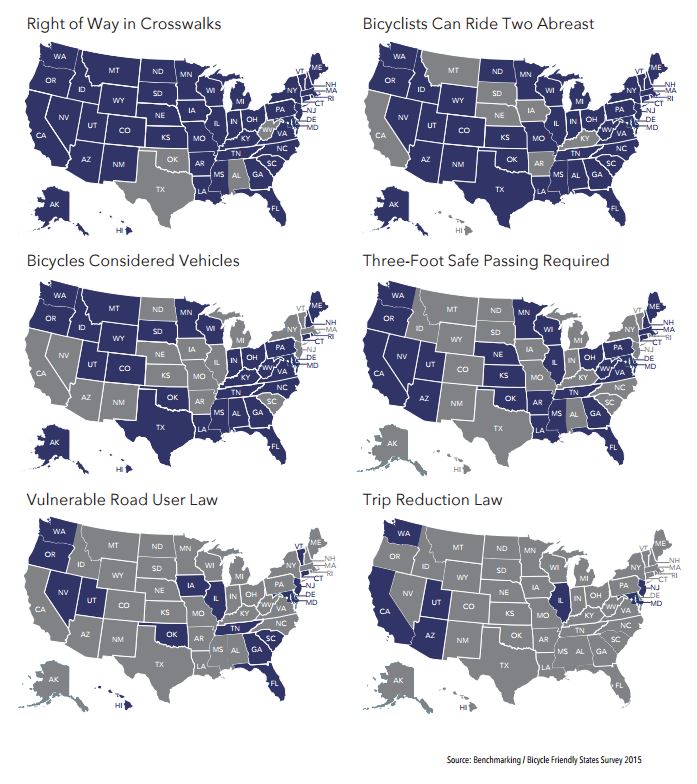
The State runs various campaigns to educate road users but it could do better in developing more training programs for those who impact biking and walking such as DOT employees and proper police officer training.
Additionally New York State DOT has one of the lowest staffing rates in the country and doesn’t spend much on pedestrians and biking projects.
 New York Personal Injury Attorneys Blog
New York Personal Injury Attorneys Blog


